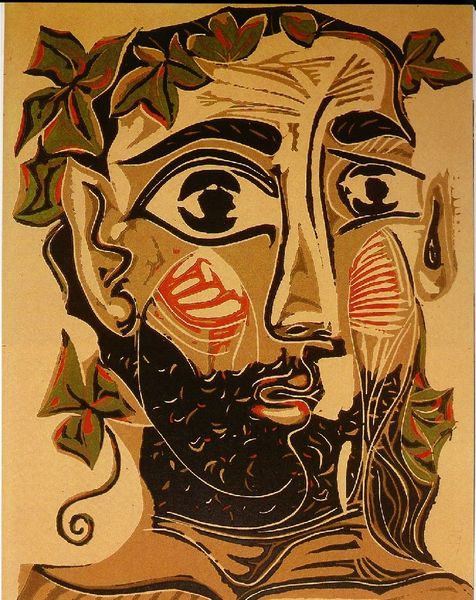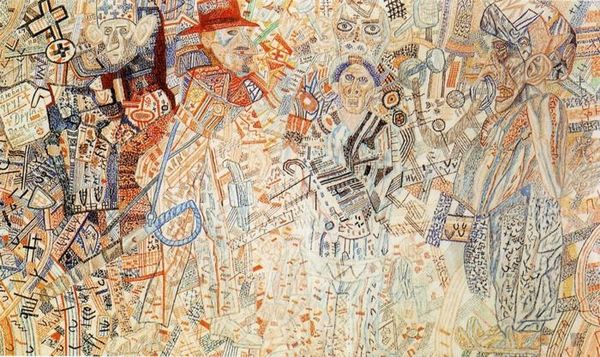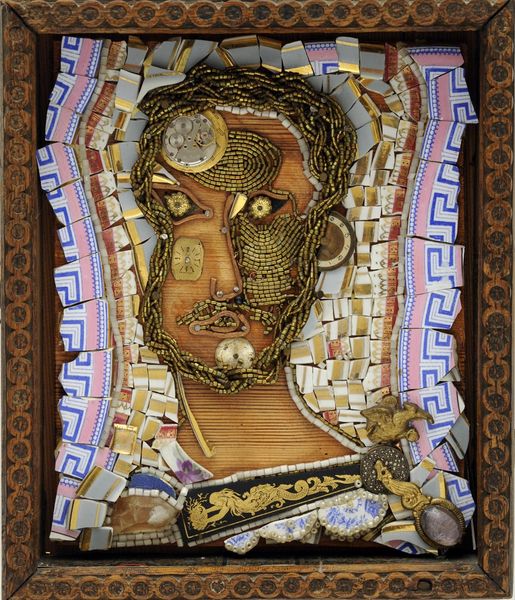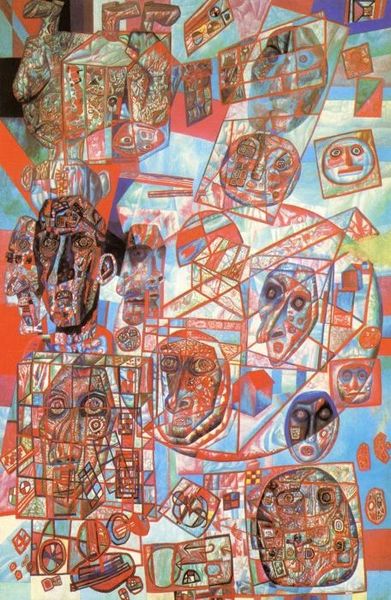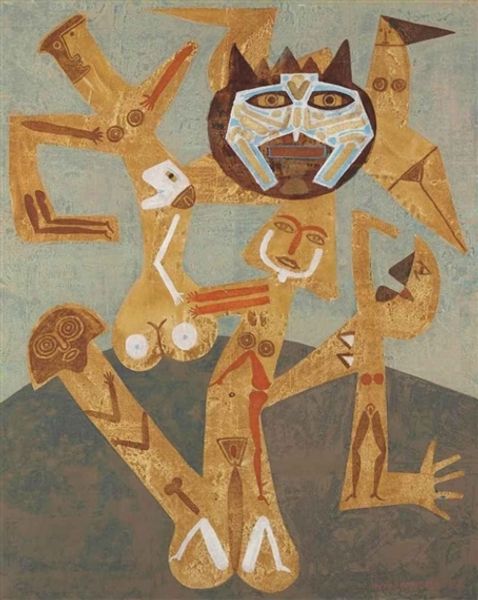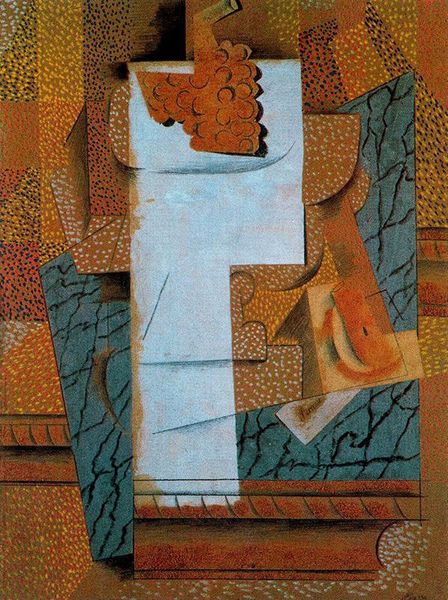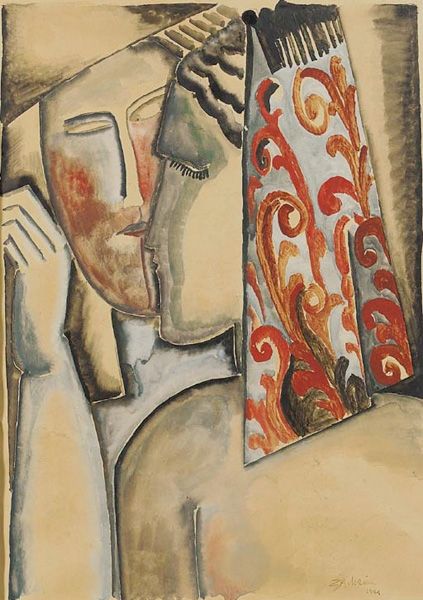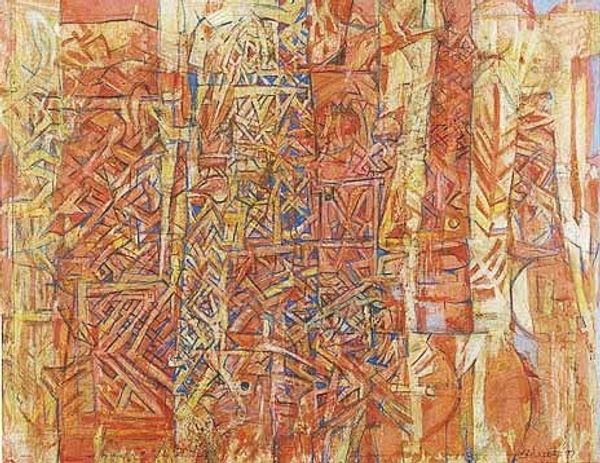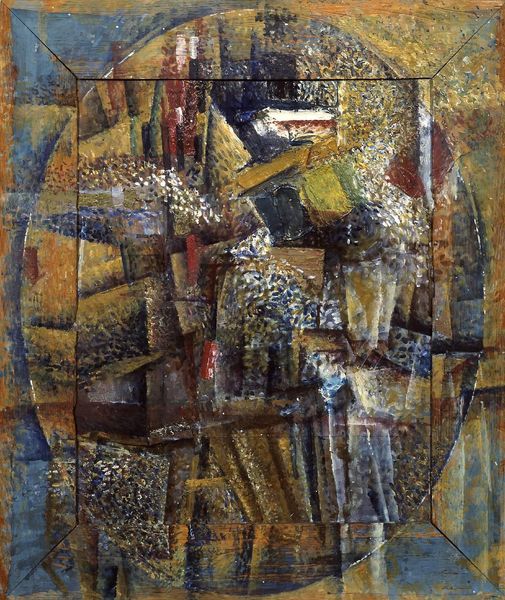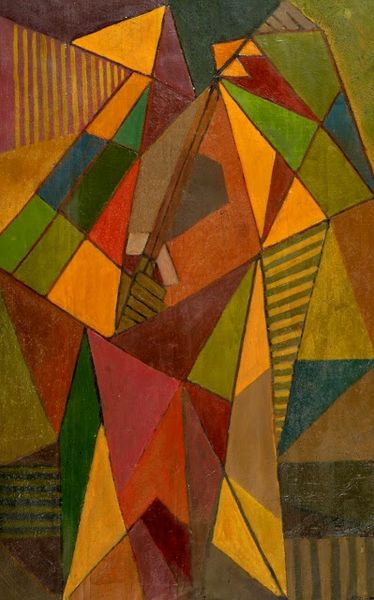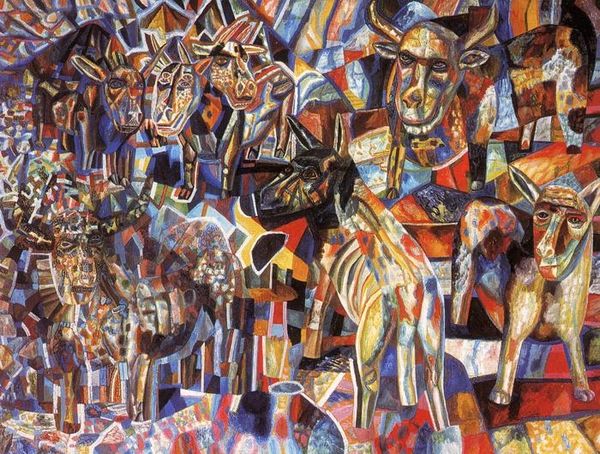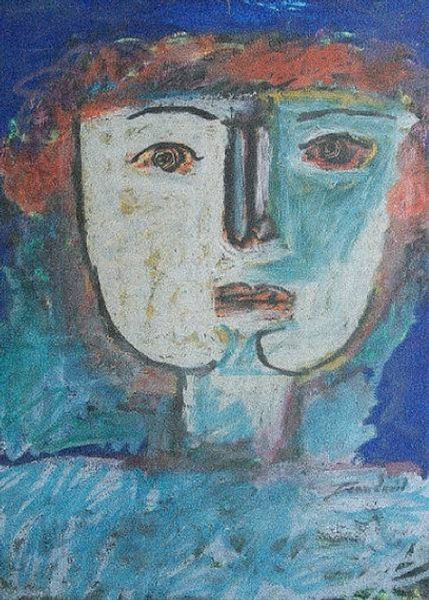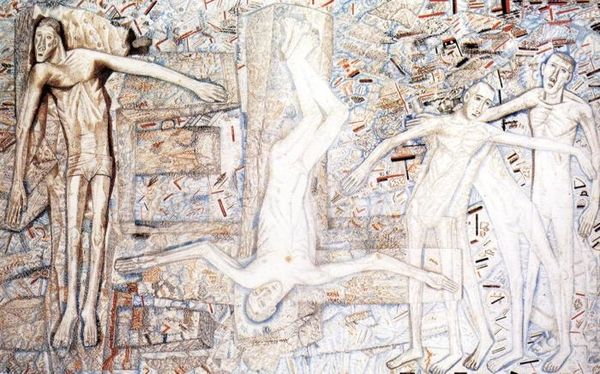
tempera, painting
#
portrait
#
tempera
#
painting
#
figuration
#
geometric
#
expressionism
#
russian-avant-garde
Copyright: Public domain
Editor: Pavel Filonov's "Head," painted in 1925 using tempera, is truly striking. I'm drawn to how fragmented and geometric the figure is, almost like a shattered portrait. How do you interpret this work, considering its unconventional representation of the human form? Curator: Filonov was deeply interested in what he called 'analytical realism'. For him, everything in the universe is composed of fundamental elements. In 'Head', we see an attempt to portray not just the external likeness but the internal essence. The fragmented forms become symbolic, each holding a piece of the subject's inner world. Doesn't it remind you of the iconographic tradition of layering symbolism onto a single image? Editor: Yes, I see what you mean about the layered symbolism. And the face almost appears to be multiplied within itself, if that makes sense. Curator: Precisely. Multiple viewpoints or moments captured in one image. This breaks down the single, fixed perspective, perhaps suggesting the complexity of identity, that there are multiple facets to every being. Does this resonate with any other art movements you've studied? Editor: Definitely Expressionism! The distortion and intensity... but the geometric approach sets it apart, doesn't it? Curator: Exactly. It pushes beyond mere emotional expression towards a structured, almost scientific exploration of the self. We can almost feel the artist dissecting the subject. What does this dissection reveal, in your opinion? Editor: It makes me think about the instability and fragility of identity, how we are all composed of many parts that don't necessarily make a clear picture. Curator: That's insightful. This painting provides a language for representing psychological realities using visual symbols that convey meaning beyond surface appearances. Editor: It's amazing to consider all the possible interpretations packed into this one “Head.” Thank you! Curator: Indeed, and by unpacking those symbols, we unlock the continued influence and importance of Russian Avant-Garde’s visual vocabulary.
Comments
No comments
Be the first to comment and join the conversation on the ultimate creative platform.
